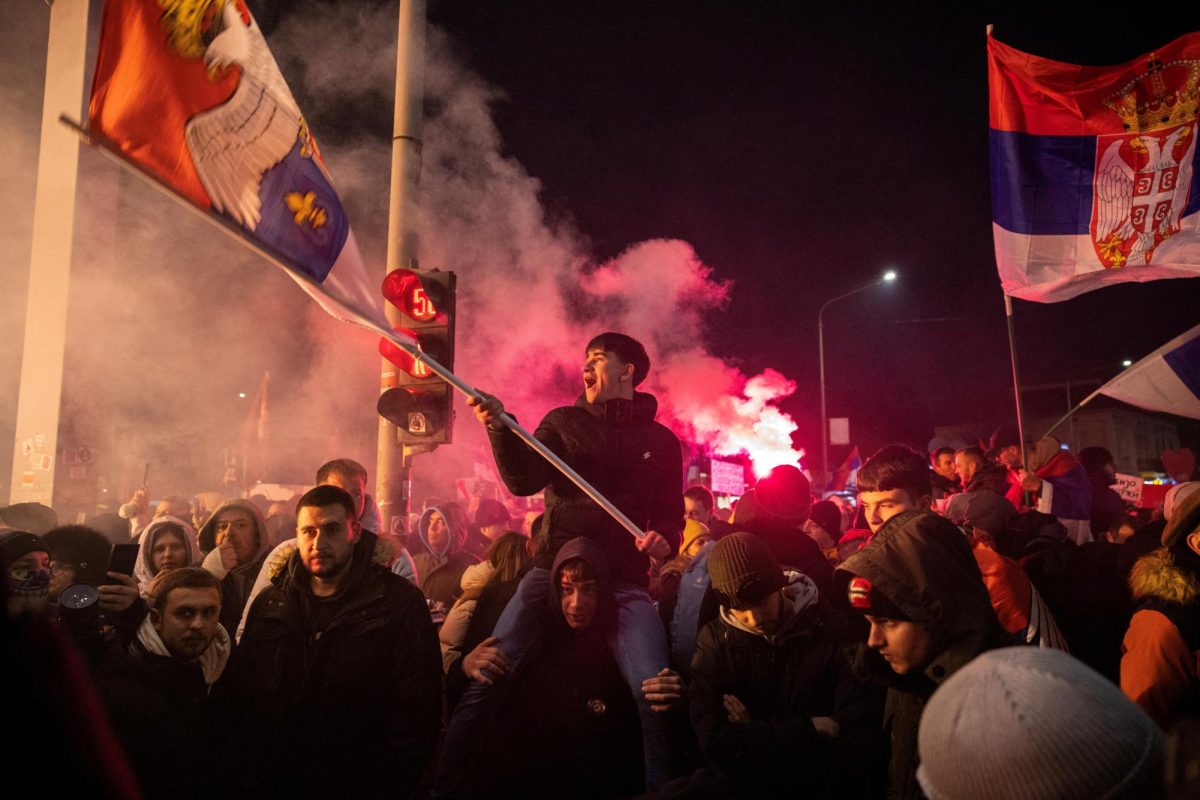
In 2013, China began its Belt and Road Initiative (BRI), a plan to connect Asian and European countries by building infrastructure and railroads–somewhat of a new-age Silk Road. Serbia was just one of the 150 countries where China invested money and resources. With the help of multiple state-owned Chinese enterprises, Serbia has recently begun expanding and renovating much of its public infrastructure, including the railway station of its second-most-populated city, Novi Sad. The station boasts a history of nearly 62 years, during which it has only been renovated twice.
Tragically, on November 1st of 2024, the concrete canopy of the Novi Sad railway station collapsed, killing 15 people and injuring two, aged six to sixty-four. As vigils were held for the victims, Serbians across the country began questioning the structural integrity of the new constructions.
At first, Serbian government officials, including President Aleksandar Vucic, insisted the outer roof had not been part of the recent railway renovation efforts and assured the public they were launching thorough, unbiased investigations into the cause of the collapse. The Associated Press reports that “later, experts denied [the government’s claims], and images emerged that suggested at least some roof work was done after all.”
As Serbian officials continued to deny responsibility for the incident, the Serbian population grew frustrated with the government’s evident lack of transparency, leading to protests and demonstrations across the country. On March 15th of 2025, Serbia’s most populous city, Belgrade, held one of the largest protests in the country’s history, consisting of angered students and citizens. Protesters’ painted red hands were pressed against government buildings and photos of officials, leaving “bloody” handprints–a symbol of the blood on authorities’ hands for the 15 deaths in Novi Sad.
Student and protester Vasilije Pantic expressed his inner divide. “I have mixed emotions: People are here for the tragedy in which 15 people lost their lives. I feel sad for them. But I’m also proud of myself and my colleagues for the journey that we’ve made here.”
Hundreds of thousands of protestors accused high-ranking executives of corruption and self-serving mismanagement. At minimum, they called for the documentation of the railway renovations to be made public and urged an independent private investigation into the collapse; at most, they called for the reconstruction of the entire Serbian government.
During every protest, 15 minutes of silence are held in honor of the 15 victims of Novi Sad. At this Belgrade protest in particular, many demonstrators allege that an illegal “sonic cannon” was deployed on the peaceful crowd during this period. Sonic cannons, or sonic weapons, “emit sound waves that can trigger physical and psychological effects, including dizziness, severe headaches, sharp ear pain, disorientation, eardrum ruptures, or even irreversible hearing damage” (Sky News).
Ilic Sunderic, a protester at the rally, said she heard “a subdued sound lasting only 2-3 seconds but very unusual and very frightening, like a sound from hell. I have been going to protests for 30 years, but I’ve never heard anything like this.” She notes that afterwards she felt pressure in her head and ears.
Sonic weapons are strictly prohibited in Serbia, and although hundreds of Belgrade protestors recounted similar stories, authorities have denied the use of anything illegal against demonstrators.
The Serbian interior minister, Ivica Dacic–whose responsibilities include crime prevention, immigration, counter-terrorism, anti-corruption, and any affairs inside the country–said in a statement, “Serbian police have never, including March 15, used any illegal or unallowed device that is not envisaged by the law, including the device known as a sound cannon. Police only use sound devices for warnings.”
After Serbian rights groups provided the European Court of Human Rights with over 4,000 corroborating statements from protestors about psychological or physical problems after the sound, the organization demanded that the Serbian government provide a comprehensive explanation for the sonic weapon accusations, but has yet to receive an official response.
“After [a] long time, we can feel positive energy in the air, on the streets, among the people,” explained Belgrade resident Slavica Nikolic amid the protests in her city.
“When I talk to people, it feels like hope has woken up. We remember well some uglier times. This is finally some sort of new hope, that something good is going to happen in this country.”
Sources:
https://news.sky.com/story/serbia-calls-for-investigation-into-claims-illegal-sonic-weapon-used-against-peaceful-protesters-13335920
https://europeanwesternbalkans.com/2025/03/15/one-of-the-largest-protests-ever-held-in-serbia-students-accuse-the-authorities-of-using-illegal-device/
http://worldatlas.com/articles/biggest-cities-in-serbia.html
https://apnews.com/article/serbia-roof-collapse-china-protests-3cfa282938b1ddec12c4795b9ecb3e95
https://crta.rs/en/the-european-court-of-human-rights-statement-regarding-the-alleged-use-of-sonic-weapons-during-the-protest/
https://www.aljazeera.com/news/2024/12/30/serbia-charges-13-including-ex-minister-in-train-station-roof-collapse